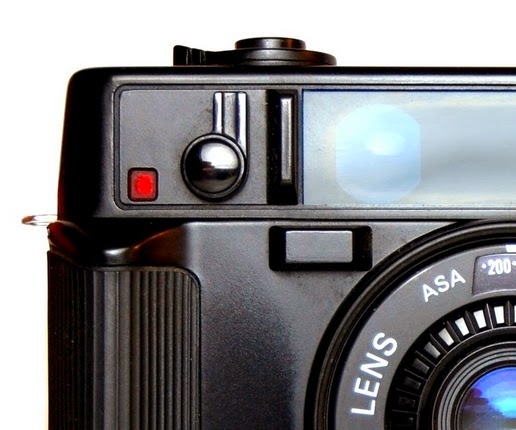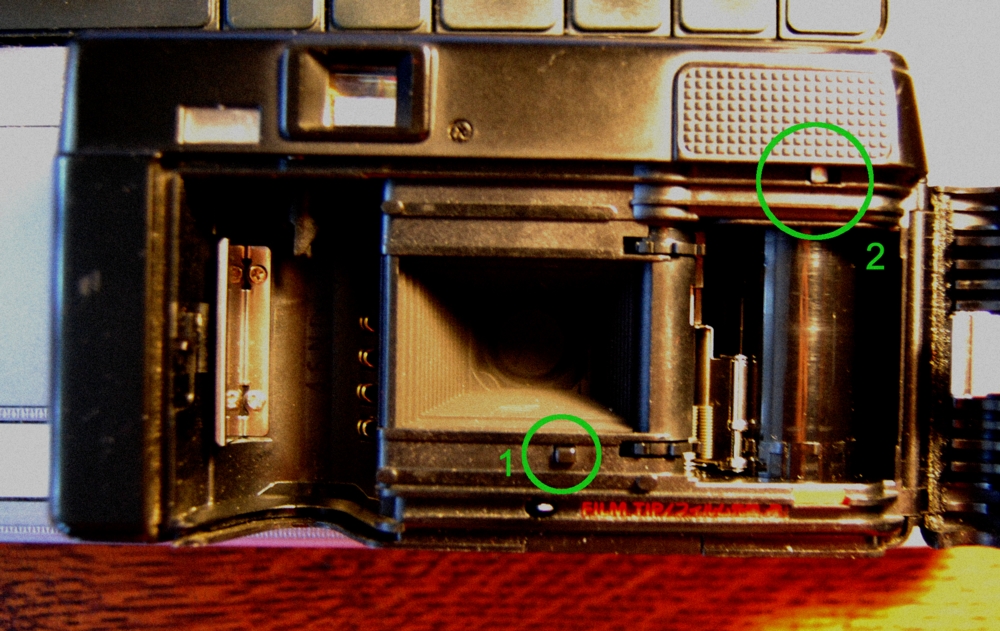Pinhole plus time plus flash equals exposure experiments
First things first, here is a link to the Vivitar 283 manual. Which I should have read first.
I exposed a number of frames of Kodak Gold 200 through a 52mm f/175 pinhole camera.
I wanted to figure out how much a single flash contributed to the exposure as an unit of time. For example 1 flash (at a particular setting) = so much exposure time.
The flash was set on Yellow. Which was the lowest power setting. For some reason I thought it was the highest of the auto settings.
The range was 4 feet with the distance to the mirror being 2 feet. The film was 200 ISO. The f stop was 175. And I can confirm the aperture is accurate enough with a previous time exposure which exposed correctly at EV 8.1, at 200 ISO, for 2:02 secs.
In the experiment the EV was 7.6.
I had to reference my notes to frames backwards because for some reason I have more frames than notes. I may have done a few test exposures before taking notes and probably before I realized I could conduct an experiment.
Frame 14 and 15 were the test shots in which to took no notes.
Frame 16: 1 x flash 180 secs.
Frame 17: 1 x flash + 120 secs.
Looks like even in a low light interior situation, time makes a huge difference.
Frame 18: 1 x flash + 60 secs.
Frame 19: 1 x flash + 30 secs.
Frame 20: 1 x flash + 30 secs. (I know, I did this twice)
Frame 21: 2 x flashes + 30 secs.
Frame 22: 3 x flashes + 30 secs. A pretty good exposure.
Frame 23: 3 x flashes + 15 secs.
Frame 24: 2 x flashes + 0 secs ( 3 secs, enough time to fire two times)
Frame 24a: It's the last shot. 3 x flashes + 0 secs. (4 secs, enough time to fire three times). Similar in exposure to frame 23.
It looks like 3 flashes at 30 secs is a winner.
An EV of 7.6 calls for 3-4 minutes exposure time.
So let's shave off the 30 sec. That leaves us 150 to 210 secs. So each flash, at that flash's particular setting, is equal to 50 to 70 secs. (I can't really say I have a good read on this. I will have to check the negs directly without scanning [I tried to scan all slides the same but the scanner may have tweaked between the sets of negatives]).
So if I had to expose something for a minute and a half, I could opt to flash twice or flash once and maybe expose for 30 secs. of time.
Which is useful if I don't want to be standing there all day.
As I look at the numbers more closely, the flashes contribution is a tad uncertain. In frame 18, the exposure is 60 secs. Leaving 120 secs left to be exposed. I used only 1 flash burst and yet the frame is clearly overexposed.
Frame 19 looks a lot like Frame 22, so I'm not really sure what going on here yet. I'll probably have to do another set of test to really figure things out.
Any how this works only at four feet. At eight feet, if somehow this numbers hold up, the flash = time would drop to 12.5 to 18 secs. roughly.
But at four feet in an EV 10 situation (does it ever get EV 10 indoors under natural light), I could try popping the flash once and closing the shutter, just to see what I get.
In a pinch it would be safe to fire 4 or 5 flashes and not worry about time in a dark or indoor shot.
I exposed a number of frames of Kodak Gold 200 through a 52mm f/175 pinhole camera.
I wanted to figure out how much a single flash contributed to the exposure as an unit of time. For example 1 flash (at a particular setting) = so much exposure time.
The flash was set on Yellow. Which was the lowest power setting. For some reason I thought it was the highest of the auto settings.
The range was 4 feet with the distance to the mirror being 2 feet. The film was 200 ISO. The f stop was 175. And I can confirm the aperture is accurate enough with a previous time exposure which exposed correctly at EV 8.1, at 200 ISO, for 2:02 secs.
In the experiment the EV was 7.6.
I had to reference my notes to frames backwards because for some reason I have more frames than notes. I may have done a few test exposures before taking notes and probably before I realized I could conduct an experiment.
Frame 14 and 15 were the test shots in which to took no notes.
Frame 16: 1 x flash 180 secs.
Frame 17: 1 x flash + 120 secs.
Looks like even in a low light interior situation, time makes a huge difference.
Frame 18: 1 x flash + 60 secs.
Frame 19: 1 x flash + 30 secs.
Frame 20: 1 x flash + 30 secs. (I know, I did this twice)
Frame 21: 2 x flashes + 30 secs.
Frame 22: 3 x flashes + 30 secs. A pretty good exposure.
Frame 23: 3 x flashes + 15 secs.
Frame 24: 2 x flashes + 0 secs ( 3 secs, enough time to fire two times)
Frame 24a: It's the last shot. 3 x flashes + 0 secs. (4 secs, enough time to fire three times). Similar in exposure to frame 23.
It looks like 3 flashes at 30 secs is a winner.
An EV of 7.6 calls for 3-4 minutes exposure time.
So if I had to expose something for a minute and a half, I could opt to flash twice or flash once and maybe expose for 30 secs. of time.
Which is useful if I don't want to be standing there all day.
As I look at the numbers more closely, the flashes contribution is a tad uncertain. In frame 18, the exposure is 60 secs. Leaving 120 secs left to be exposed. I used only 1 flash burst and yet the frame is clearly overexposed.
Frame 19 looks a lot like Frame 22, so I'm not really sure what going on here yet. I'll probably have to do another set of test to really figure things out.
Any how this works only at four feet. At eight feet, if somehow this numbers hold up, the flash = time would drop to 12.5 to 18 secs. roughly.
But at four feet in an EV 10 situation (does it ever get EV 10 indoors under natural light), I could try popping the flash once and closing the shutter, just to see what I get.
In a pinch it would be safe to fire 4 or 5 flashes and not worry about time in a dark or indoor shot.





Comments